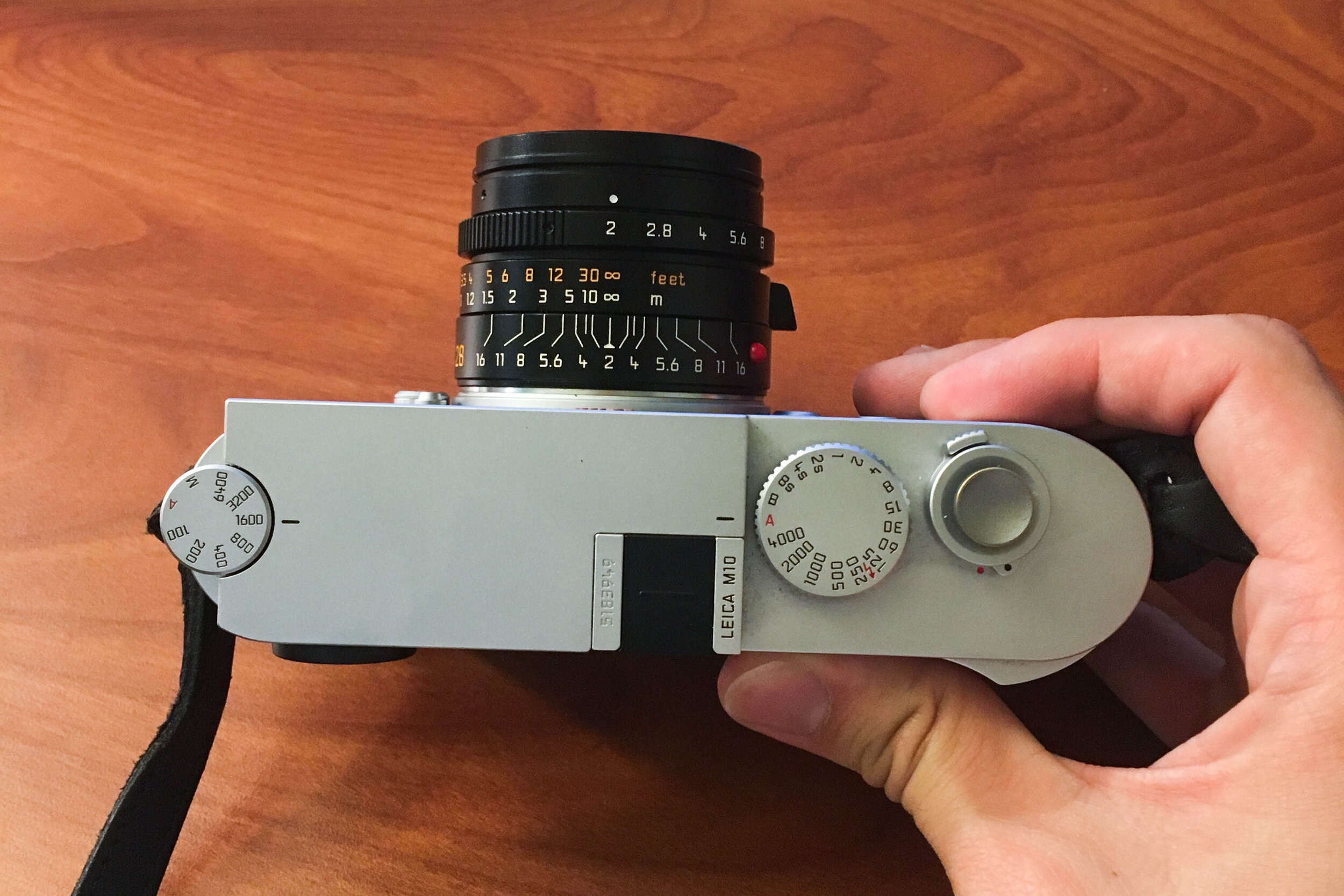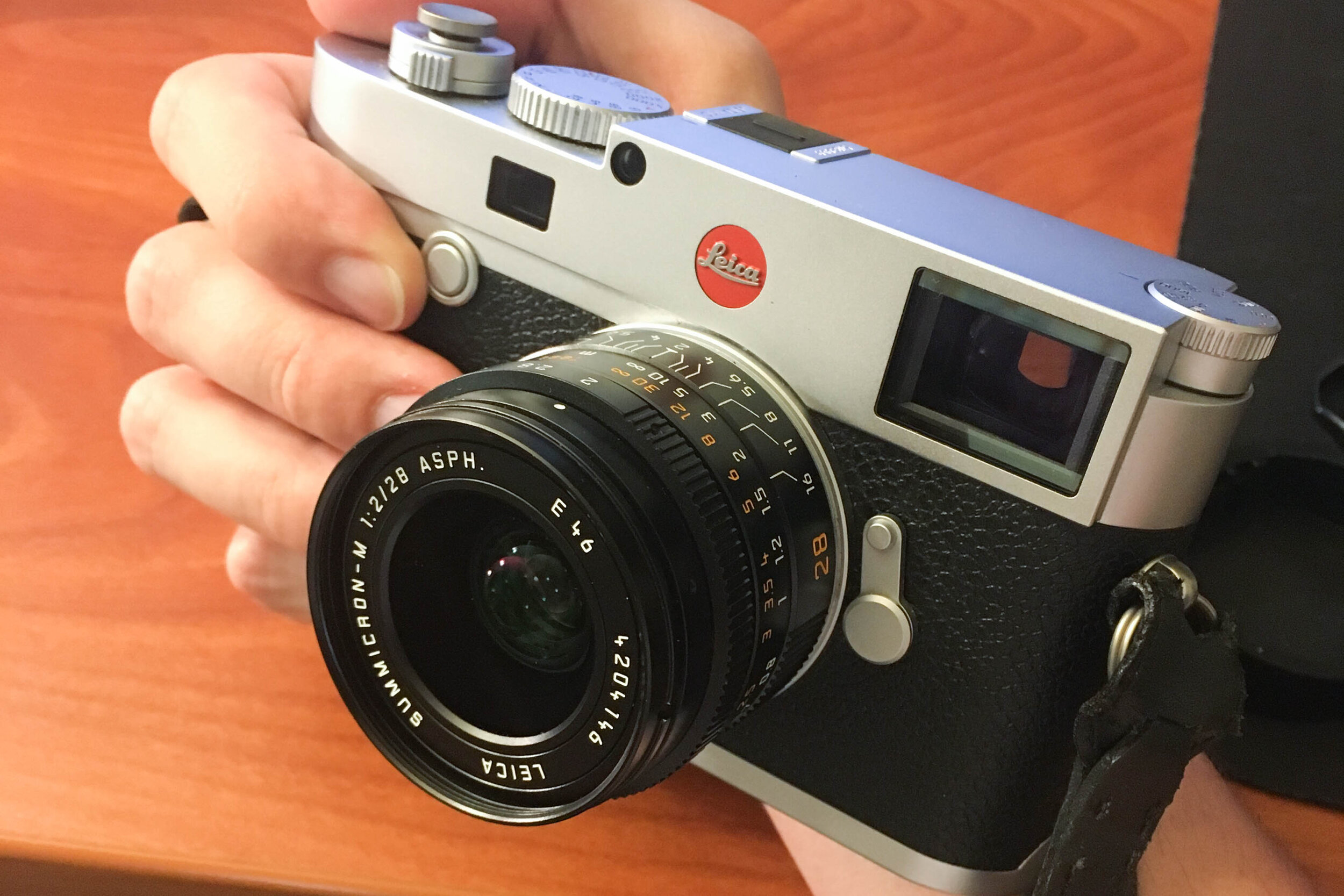Updated March 2025
Introduction
Years ago, I bought a Leica 28mm Summicron to replace my oversized Zeiss 35/1.4 as my go-to lens. I was excited by the compactness of the 28 Summicron, as well as its reputation for stellar image quality and unique rendering.
What I quickly found is the 28 Summicron is one of Leica’s greatest successes. It’s the perfect 28mm lens, and consequently this review will be brief.
Leica M10
Leica M10
Leica M10
I can’t emphasize enough how much I like the 28mm field of view. There’s a reason most smartphone cameras are 28mm-equivalent. It’s a very natural-looking perspective that’s wide enough to capture an entire scene but not so wide that the edges look stretched. Photos shot with 28mm have the ability to draw me in and make me feel like I’m there. It’s an especially effective focal length for street photography:
Leica M10
About this lens
The lens reviewed here is the version 1. The version 2, released in 2016, has an improved metal screw-on hood and improved sharpness in the periphery. Version 3, released in 2023, is optically the same as version 2 but can focus to 0.4m, and has a built-in retractable hood.
Build quality
It’s Leica, not much else to say. The hood for the version 1 of this lens is plastic, but the versions 2 and 3 have metal hoods.
Size and feel
Perfection. Excluding the version 1’s oversized plastic hood, the 28 Summicron feels perfectly balanced on an M body. The aperture ring feels great and the focus tab moves as smooth as butter, with light resistance. Using the focus tab on this lens is my absolute favorite method for focusing on a Leica camera.
From left: Voigtlander 21/1.8, Zeiss 35/1.4, Leica 28/2, Voigtlander 35/2.5
Minimum focus distance
Versions 1 and 2 are limited to 0.7m, which on a 28mm lens is quite limiting in terms of magnification. There were many frustrating instances where I wanted to photograph something up close (e.g. food) with my version 1 Summicron but couldn’t get nearly close enough. The version 3 solves this by allowing focusing to 0.4m, but it’s worth noting that a new copy will set you back $5,395.
Here’s how the 28 Summicron looks at 0.7m:
Leica M10
Image quality
Distortion:
None. Impressive.
Vignetting:
Nothing excessive, even wide-open.
Chromatic aberration:
Minimal/none.
Bokeh:
Naturally, a 28/2 lens doesn’t produce a ton of bokeh, but the depth of field is shallow enough to isolate subjects at close distances. Out-of-focus regions are rendered beautifully by the 28 Summicron. Something about this lens’s rendering at f/2, combined with the 28mm perspective, is very immersive for me. It’s as if the lens is capturing just how things appear to the eye.
Leica M10
Leica M10
Leica M10
Leica M10
Sharpness:
At f/2, the 28 Summicron is already perfectly sharp through most of the frame. There is some softness in the edges/corners that improves by f/4:
Overview
Corner crop, f/2
Corner crop, f/4
The version 2 of this lens is said to have improved peripheral sharpness, so I imagine its performance is near perfect. But I was never disappointed by my version 1.
Focus shift:
There is a small amount of focus shift at f/2.8-f/4 but not enough to noticeably impact sharpness.
Summary and recommendations
Leica M6 TTL, Portra 400
Leica M6 TTL, Portra 800
The Leica 28mm Summicron is one of my favorite Leica lenses. It’s small, sharp, and fast. Its handling is superb. It doesn’t even have geometric distortion, which is rarely the case with fast wide-angle lenses. And while a new copy retails for $5,395, used copies of version 1 sell for around $2000, which is actually pretty good by Leica standards.
Based on this glowing review, it would be reasonable to assume that I highly recommend the 28 Summicron. However, the problem for the Summicron is the new Voigtlander 28/2 Ultron (review). This is a phenomenal lens that is just as perfect as the 28 Summicron but costs a mere $899. It can also focus to 0.5m and is even a little bit smaller than the 28 Summicron. With this lens on the market, it’s tough to find any circumstances in which buying the Summicron makes sense. Perhaps the Version 3 of the Summicron could be a logical choice if a built-in hood and 0.4m focusing are priorities, and cost is not.
There are a couple other compelling alternatives in addition to the Ultron. The upcoming Voigtlander 28/2 APO-Lanthar is supposed to be incredibly well-corrected with the drawback of being somewhat larger than the Ultron. The Voigtlander 28/2.8 Color-Skopar is also a well-regarded lens for those who don’t need f/2; I personally am not willing to give up that much depth of field control. Finally, there’s the Voigtlander 28/1.5 Nokton (review). I had a frustrating experience with quality control issues, but otherwise this is an excellent 28/1.5 lens that’s not that much bigger than the Ultron.
Good
Image quality
Size and feel
Build quality
Bad
Much more expensive than Voigtlander alternative
Buy here
Making this website is my hobby and hosting it costs $200/year. If you decide to buy this lens and want me to get paid a commission, please complete your purchase using my custom link. Alternatively, you can buy something from my accessories page or buy me a coffee!
Other alternatives (not recommended)
Zeiss 28/2.8 Biogon
Leica 28/2.8 Elmarit ASPH
These lenses aren’t bad but they’re more expensive than the Voigtlander 28/2 despite being one stop slower and having worse performance.
Leica 28mm f/1.4 Summilux ASPH
I hear this lens is a great performer, but I will probably never own one since it retails for the astronomical price of $7,995. It’s also larger than the similarly-performing Voigtlander 28/1.5 Nokton and limited to 0.7m focusing.
Voigtlander Ultron 28mm f/2 (pre-ASPH)
I’ve never used this lens. Although it offers an f/2 aperture and a very reasonable price, by all accounts it has significantly compromised image quality including very blurry edges at f/2.
Additional reading
Review by KJ Vogelius
Comparison vs Voigtlander by Fred Miranda
Version 1 vs Version 2 comparison




